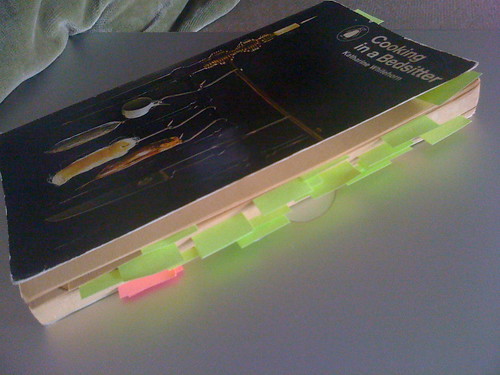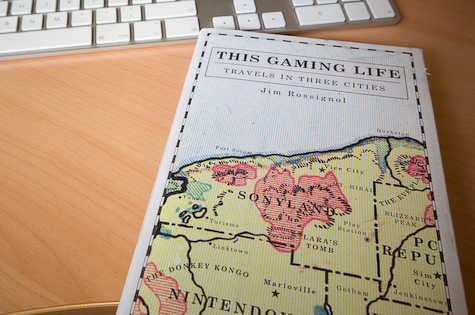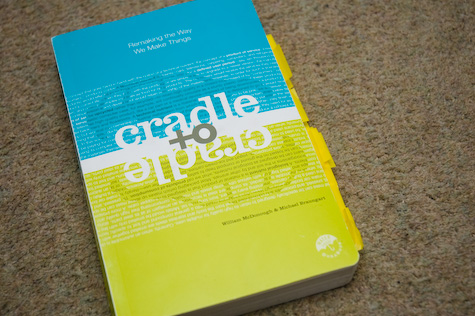I couldn’t put this down.
I’m a fan of Harrison’s writing, so I might be biased, but this enthralled me. Much of his work veers between Fantasy, SF, and magic realism. This is at most only a little of the latter: a hazy set of tales spread over a year, from the perspective of a man – “Mike” – moving to the north to leave a failing relationship, and finding solace on the side of rocks and in the company of climbers. Not a failing relationship, actually, so much as a dwindling one. Nothing stops or starts here: things just fade in and out.
There is a plot, for sure, told in fits and starts, but threading ever-forward. And yet the magic of the book is in the telling. In some ways, it’s very plain prose – and yet it unpacks in your head, like dense poetry. It’s told with a very narrow depth-of-field: some scenes, some people are perceived acutely; others just float by, either out of Mike’s focus or ignored, either unconsciously or not. And, every now and then, out of the mist, the text just leaps out. I underlined quite a bit; I’m not sure how much sense it’ll make out of context.
It probably helps that I read most of it on holiday in the Peak District, not far from many of the places the gang are. “We’re just here in my book,” I’d say, as we drove along, and I thought about Mike, and Normal, and Sankey, and Gaz, and Mick, falling off walls, sheltering from the rain, arseholing along in a Robin Reliant.
It’s special, for sure. I’m not a climber, but am outdoorsy enough to understand some of the perspective – and, when I lack it, to remember the vested men and women extended on Malham Cove, and imagine who Mike is talking about.
Speaking to Rolling Stone about his novel Libra in 1988 – the year Harrison completed Climbers – Don DeLillo described fiction as an art-form capable of ‘rescuing history from its confusions . . . providing balance and rhythm . . . correcting, clearing up and, perhaps most important of all, finding rhythms and symmetries’.
David was a fireman, whose prematurely white hair gave him a kind but slightly overdressed look, like a professional snooker player.
When they spoke to one another it was in a language full of ellipses, hints and abrupt changes of subject, in which the concrete things were items and prices.
The wind pulled the strings of mucus out grotesquely, so that during the instant before they snapped they floated with all the elegance of spider-silk. Our fingers went numb, only to come back to life twenty or thirty feet up, at just the wrong moment, the size of bananas and throbbing with hot-aches.
‘It’s no good. I can see what to do but I can’t convince myself to do it.’
March is the hinge. There is always the sense that the year might as easily slam shut on it as open.
…jumped off with a thud and stared sulkily across at the abandoned explosives store with its fringe of rank weeds. ‘Looks like bloody Dr Who.’
Earth, 1997: everyone lives under the ground and wears identical clothes. Something appalling has been done to their sexuality and they walk round staring directly ahead of themselves. ‘Not much different to now.’ Every fifteen minutes a voice like the station announcer at Preston says something nobody can understand and they all walk off down a different corridor. Can the Doctor help them?
‘For fuck’s sake shut up,’ said Gaz, ‘and let’s go somewhere we can climb.’
When you hear an old song again like that, one you have not thought about for years, there is a brief slippage of time, a shiver, as if something had cut down obliquely through your life and displaced each layer by its own depth along the fault line.
…we went, as he put it, arseholing down the M6 with the radio turned up full: AC/DC, Kate Bush, Bowie’s ‘Station to Station’ already a nostalgia number. How many times, coming back after a hard day like that, has there seemed to be something utterly significant in the curve of a cooling tower, or the way a field between two factories, reddened in the evening light, rises to meet the locks on a disused canal?
One thick vertical bar crossed at three-quarters of its length by a thinner, shorter one, both enclosed in a parallelogram of shadow: a strange figure, the dark part the colour of earth and lichen, the bright parts green and gold. All morning the sun had been forcing it round to the north. It elongated itself to escape. Eventually it would go too far and break to pieces against the shelves of books, but not before the cat Rutherford had got down in it and wriggled with pleasure.
The life that goes on in cafes is domestic but minimal. Alone in one you pour your tea, unwrap a knife from a paper serviette that says ‘Forte’ or ‘Thank you, we hope you will call again at Marie’s’; there is as much comfort as you like to create out of the rattle of crocks or the slump of the waitress’s shoulders, and no further claim on you as there would be at home.)
On Sunday mornings the Railway Cafe at Grindleford is full of school teachers, up from the Midlands by Ford Fiesta to do climbs in the Hard Very Severe and low Extreme grades. They squeeze between the tables in the hot steamy air, shouting and talking and clattering their plates. The men, in their middle thirties, with longish hair and aggressive but neat beards, often teach maths or geography; some of them can play the guitar. They make thoughtful, steady climbers. Though they lack the imagination, the edge of nervous excitement, to be outstanding, they form the backbone of the sport. They occupy its middle ground. They decide its shape. If they have a fault it’s that they are too minutely concerned to use in the same way the same holds everyone else has used.
The moment you step into a landscape it becomes another one.
All Sankey’s things – the chipped Baby Belling on the draining board; the bits of unmatched blue and fawn carpet; the one-bar fire, the transistor radio, the stereo with its handful of dog-eared albums from the early Seventies – had a used but uncooperative look. He had assembled them, and while he was still alive his personality had held them together; now they were distancing themselves from one another again like objects in a second-hand shop.
‘You spend Christmas,’ I wrote, ‘surrounded by other people’s assessment of you’
If you look straight down an Inter-City second-class carriage, the landscape on both sides of the train flies past in your peripheral vision like images in a split-screen film. You have only an instant in which to recognise an object before it becomes a blur.
Without a word, he levered himself on to The Snivelling and climbed neatly and carefully, without slowing down or stopping, to the top of it. There, he waved his arms disconnectedly in relief. He let out a shout of triumph which made his face seem distorted and animal-like: I understood that Mick went climbing only to release this expression from himself. What it represented I had no idea. For a moment though I was awed, and almost as excited as he was.
Mick’s stories about his job are mixed with sentimental memories of ‘the rescue’, preserved in – and intricated with – an even older level of material from his school days. He often seems to forget I wasn’t there when this childhood sediment was laid down. His tenses saw violently back and forth as he tries to unearth what he wants.
You believe, as you make the first move, that you have already accepted the potential fall.
I played ZZ Top, ‘Deguello’: my aggression seemed endless. The music fell obliquely across the rock, illuminating it like a new wavelength of light to reveal brand-new ways of climbing.
Something seemed to lurch inside my knee, like a small animal trying to escape.
In a figure-four move, you try and sit on your own arm to extend your reach.
Cavers, anyway, are proud of their parties, which are predicated on a greater despair than climbers can ever experience, the knowledge that you are going down into the ground the next day, where it is dark and cold and smells like a hole in the road; or on a greater joy, which is that you have come up again.
He turned up ten minutes later, in a bruised Transit van belonging to his firm. Inside, it smelled of oil, Swarfega and old polypropylene rope.
‘Ever been? One minute nothing’s happening. They’re just cruising round the pace lap. The next it’s like Apocalypse Now in a cinema full of hot dog stands. You can’t see for cinders and all you can smell is fried onions. Fucking awesome!’
As if pigments could learn about what they represent, events understand themselves more accurately towards the end than the beginning, the freshly quarried boulders photographed at Millstone Edge have confirmed their outlines and no longer resemble melted lumps of sugar.


